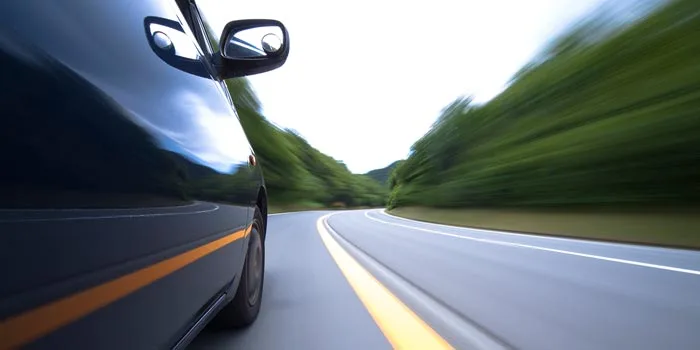7 Driving Etiquette Rules Everyone Should Know


Good driving etiquette can help you become a safer, more considerate driver — no matter how long you’ve been driving. Following basic driving rules make you not just a good neighbor and citizen, but also keep you and others safe (and cut down on the possibility of legal consequences).
Here are seven road etiquette rules you may not know but that you should be following. Keep in mind: with programs like Farm Bureau’s Driveology, safe drivers can save an average of more than 25% on their insurance premiums just for being a good driver.
If you aren’t in a hurry, are unfamiliar with the roads or are driving in tricky weather conditions, drive in the right lane. That allows faster-moving cars to pass and move more quickly in the left lane. In some states, police can ticket drivers who are not traveling at the minimum speed (sometimes 40 MPH on a freeway). Not only do slow drivers violate common driving etiquette, but they can also be a hindrance to traffic flow and cause a safety hazard for drivers behind them who can’t judge their speed accurately.
While semi-trucks often stay in the right lane to allow faster moving cars to pass them, there are times truck drivers need to pass slower moving semi-trucks. When one semi is passing another, the non-passing semi driver will quickly flash the headlights to let the passing semi know when there is enough space to move back into the right lane. Once one semi driver has successfully passed the other, the driver will tap the brakes quickly, using the brake lights to serve as a “thank you.” Keeping an eye on those signals will help you understand their behavior and not misinterpret any signals.
You’re planning to turn. Do you know when you should turn on your turn signal? In some states, drivers are encouraged to use telephone poles as markers for when to activate their turn signals. Turn on your blinker at the last telephone pole before your turn, or about 100 feet before you reach the turn lane. Using a turn signal helps people behind you know how to moderate their driving behavior and keeps you safe on the road. Don’t be the driver who doesn’t signal, or who signals far too late, and causes an accident.
If you see two motorcycle riders passing each other, keep an eye on their hands. Bikers will often give each other “the wave” — their left hand aimed out and down from their bike — when passing.
Likewise, Jeep drivers have their own wave. When Jeep drivers spot each other, the drivers wave. If the Jeep’s top is down, tradition calls for the wave to be above the windshield. Knowing this helps you properly interpret hand signals that you see on the road.
The formal traffic rule is that the car on the right of the intersection has the right of way. But sometimes it’s unclear who should yield. If you and another driver keep starting and stopping, stop and wave for the other car to go first. If you are driving in low-visibility conditions and can’t see a wave, flash your headlights (but not your brights) to signal that the other driver should go first.
When you’re switching lanes, make sure you can see both of the headlights of the car you’re passing in your side-view mirror before signaling your intention to move over. This technique is routinely taught to new drivers, but even experienced drivers should keep this in mind. It helps the other driver make good decisions about their own driving, and it’s an easy way to avoid dangerous (and costly) collisions.
Driving etiquette also extends to off-road vehicles, such as snowmobilers. They will hold up a certain number of fingers to tell drivers how many other snowmobile riders are behind them. They also will tap their helmet the same number of times. This helps keep narrow trails navigable, with passing drivers waiting on the side until all the snowmobilers have safely passed.
No matter where you’re driving or what kind of vehicle it is, you need to make sure you’re covered before the unexpected happens. Your local Farm Bureau agent can help.